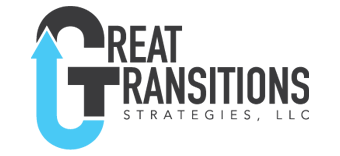Which is more familiar to you?
Every time we get together as a team of six, we are productive, have serious work to accomplish, leave with a number of actions complete and a goal for what we need to work next.
Or
When our team meets it is usually based on a standing agenda where we go around the table with staff updates, there are 11 of us. That is followed by discussing the topic or operational issue of the week. Typically, that is relevant to only several players.
Two questions 1) Which group is a real team? 2) If you asked members of each team: “What is the purpose of your team?” which team members would give consistent answers?
Now assess yourself. Of the teams you are part of or as the leader have you put in place, answer how members would respond to the two questions, 1) is this a real team and 2) what is the purpose. If the replies are “no” to number one and inconsistent to number two, how can you make some progress.
Teams are a reality of the workplace and often produce results superior to individuals working solo. However, they are not always needed nor should every group of individuals that come together be called a team. Research done at Harvard by Drs. Richard Hackman and Ruth Wageman has resulted in a model for what makes effective teams. They have designated six conditions, three elements named “The Essentials” and three named “The Enablers” for a high performing team. We will only focus on “The Essentials”: Real Team, Right People, and Compelling Purpose. Their research shows, without these three essentials, the team is destined for mediocrity.
Let’s get practical and make a team you created, are considering, or are a member of more effective. What do “The Essentials” mean?
A Real Team means the team is bounded, consistent membership with everyone knowing who is and is not a member. The members are interdependent, they need each other to accomplish the common work. Lastly the team is stable, meaning they work together long enough to accomplish a task or tasks together. Grade yourself, how does your team score?
The Right People means that the team has the right diversity and skills. Diversity of viewpoints, skill, and knowledge to accomplish the tasks is the type of diversity required. One of the skills required of each member is teamwork. An individual who is knowledgeable but not working for the good of the whole does not fit the criteria.
The Compelling Purpose consists of three elements; it must be clear, challenging, and consequential. I will start with challenging and consequential. When bringing a group of people of significant seniority and skill together it needs to be worth their time. Must be challenging enough to stretch the team’s capability and the impact of success should significant. Clear, every member of the team knows what success is. This is much more than just reiterating the organization’s mission statement. Specific, the purpose of this team is….
A colleague I recently was talking with was relating the work of a leadership teams she is on. Its purpose: put the policy and procedures in place to bring the workforce back into the building. The team consists of the top leadership (c-suite) with the addition of the top facilities person, a medical representative, and a workforce representative. As needed, they bring in specialists to provide expertise the team lacks on particular issues. They meet three times a week, have an ongoing decision journal, and are creating a new employee handbook to address employees returning.
Do your own assessment of this team. On a scale of 1-10 how well are they meeting the criteria for The Essentials: Real Team, Right People, and Compelling Purpose?
In working with leaders concerned with existing team performance, the most common question is: “Where should I start?”. My recommendation, start with Compelling Purpose. For every team you have formed or are part of ask the members to individually write the answer to: “What is the compelling purpose of this team.”
The results will reveal your next steps. Looking for help with the assessment of your team, contact us today for a complimentary coaching session.






